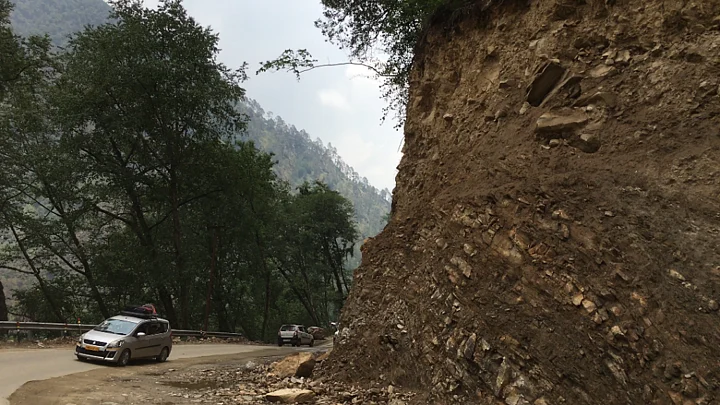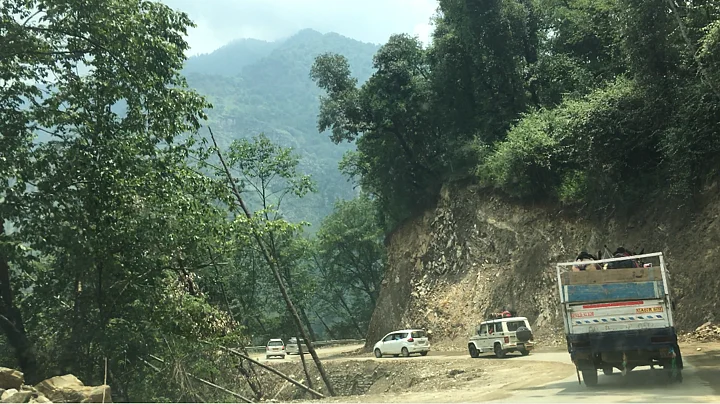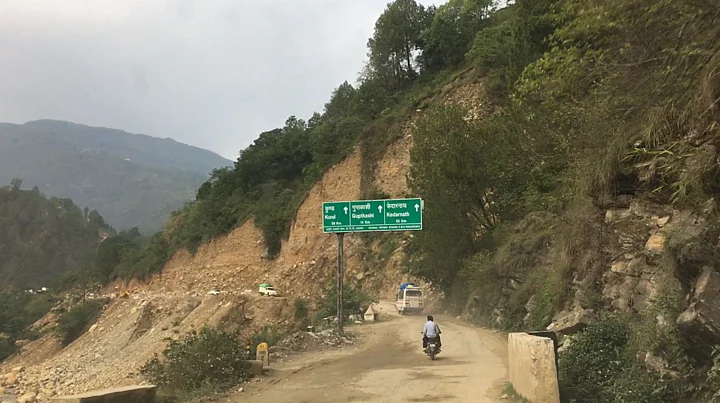Video Editor: Vivek Gupta
(This story was first published on 17 June 2018 and has been republished from The Quint’s archives amid massive flash floods that caused the Rishi Ganga river to swell, resulting in at least 19 deaths in Tapovan, which lies close to Joshimath in Uttarakhand’s Chamoli district.)
On 27 December 2016, Prime Minister Narendra Modi laid the foundation stone for the ambitious Chardham Mahamarg Vikas Pariyojna, a Rs 12,000 crore highway-development project that seeks to ease connectivity between the Char Dham shrines in Uttarakhand.
The project was setup to widen existing roads and make the entire 900 km stretch immune to the vagaries of weather in the ecologically sensitive and geologically unstable Garhwal hills. But the landmark initiative has run into controversies, with questions being raised on methods of hill-cutting and unnecessary felling of trees.
Some argue that roads are a major component in the redevelopment of Uttarakhand, which suffered extensive damage in the flash-floods of 2013. Amid environmental concerns over the building of roads that are key to the hill-state’s economic growth, The Quint spoke to experts on how to mountainous roads can be constructed without harming the ecological balance of the region.
How Not To Construct Mountain Roads?
We spoke to Professor RC Sharma, head of the department of Environmental Sciences at Hemwati Nandan Bahuguna Garhwal University, to understand how the government’s big ticket development project in Uttarakhand is being implemented.
How to minimise deforestation during road cutting?
Construction of roads in the eco-sensitive Garhwal region is challenging, as they cannot be constructed in a straight, linear manner. Hence, diversions and tunnels should be constructed wherever possible so that lesser trees are cut. But the government is in a hurry to complete the 2019 deadline. With more time and planning, lesser trees could have been cut.
Can Landslides be Avoided?
Slopes shouldn’t be cut at an angle of 80 or 90 degrees. If you cut at an angle of 45 degrees, landslides can be avoided. Steep-cutting may increase chances of landslides, as the entire landmass may come down.
Steep-Cut Hill Slopes: A Disaster in the Making?
However, all along the road from Rishikesh to Sonprayag, extremely steep hill-slopes are alarmingly common. A little ahead of Sonprayag, we found that a portion of the hill has been cut at an angle of 90 degrees. This route is frequented not only by pilgrims but also experiences heavy rainfall. In such situations, chances of a landslide remain high.
Politics of a Dumping Site in Uttarakhand
Rocky waste from hill-cutting is deposited at dumping sites. But how safe are they?
They have constructed dumping sites near U-turns. But these U-turns are located just in the way of streams or seasonal waterfalls. Such streams should be allowed to pass and culverts should have been made to allow the water to pass below. Heavy rains in the months of July & August may wash these dumping sites away.
Report on Kedarnath Redevelopment Ignored?
While the widening of roads for the Chardham project remains marred by environmental concerns, the re-development of Kedarnath, which was nearly destroyed in the 2013 flash-floods, too has raised eyebrows.
Dr Pradeep Srivastav of the Wadia Institute of Himalayan Geology was one of the authors of the report presented by ‘Map the Neighbourhood in Uttarakhand’, a committee formed “in order to develop a concrete scientific action plan for reconstruction and relocation of infrastructure facilities in Uttarakhand.”
With the help of students and locals, the report, according to Dr Srivastav had mapped almost every corner of the state and had suggested detailed recommendations. But none of the recommendations, he asserts, have been taken note of.
He also notes that ongoing redevelopment and construction work in Kedarnath is actually “a step backwards.”
How Can Kedarnath Be Made Safer?
What is the proper way to redevelop Kedarnath?
In the report, we had suggested that no development work should take place beyond Sonprayag. Instead, smart buffer zones should be created in towns below Sonprayag, where pilgrims can be managed according the carrying capacity of the place. The flow of pilgrims can be regulated in a step-by-step manner, and at a time, up to 500 people can be allowed in the hill-top shrine of Kedarnath. The buffer zones can be called smart only if they environment friendly and provide rapid access to rapid evacuation routes, in the event of an emergency.
Can smart radars anticipate heavy rainfall?
After the 2013 tragedy, the Uttarakhand government had proposed advanced weather monitoring stations in Kedarnath. These modern radars can measure moisture content in air parcels, and thereby issue alerts. But till date, no such radars have been installed.
Dr Srivastav maintains that every place has its own carrying capacity. In the steep-gradient of Kedarnath, the weather can change at any time. The government, he maintains, must be mindful of the limits of nature. Else, injudicious development, can lead to the possibility of yet another disaster.



